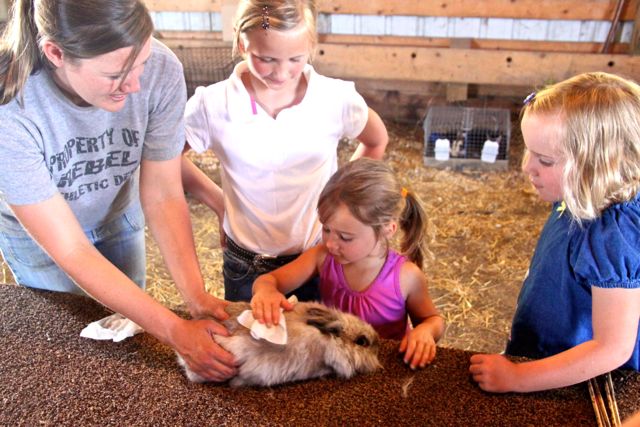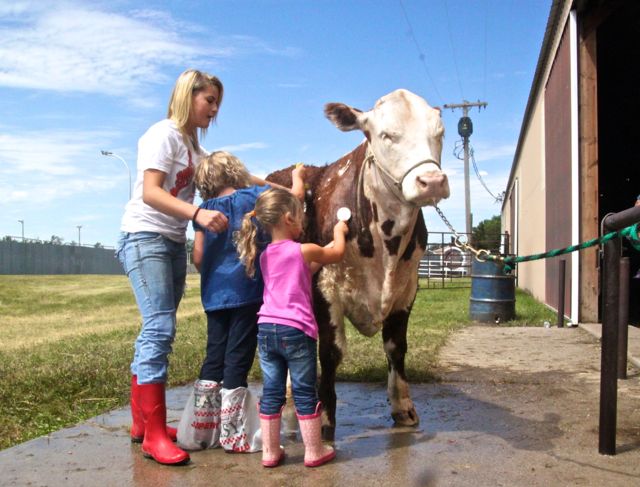 Last night my friend Brenda and I were walking down our local high school’s hallway to the elementary wing. Yes, our small town school is all in one building. A strength of a one building school is how it builds relationships with kids from preschool through grade 12. Kids stay connected with one another, regardless of age.
Last night my friend Brenda and I were walking down our local high school’s hallway to the elementary wing. Yes, our small town school is all in one building. A strength of a one building school is how it builds relationships with kids from preschool through grade 12. Kids stay connected with one another, regardless of age.
Brenda and I were passing by a wall with a large sign that read “MENTORS”. The wall was filled with names that kids in grades 7-12 had written who one of their mentors was. I knew that right away when I spotted Hunter’s at the top. It read, “Grandpa Fred” and made my eyes well up with tears. Hunter’s name was not on it but I knew by his writing. My dad is a mentor to me and now is a mentor to our son. I was going to keep walking until Brenda said to me, “Hey Katie, there’s your name.” Two signs said “Katie Pinke” on them. I felt a little pressure. I am a mentor. I hope I don’t disappoint them. I hope I can live up to their expectations of what a mentor should be.
I don’t know who wrote down my name. But I am honored that two teenagers in our local school thought of me as one of their mentors. If you wrote it and are reading this, thank you, for giving me a slice of happiness and unexpected joy.
There were a slew of names on the wall from parents to neighbors, teachers, coaches and even a rock star, PINK was listed as a mentor.
It made me think of how you become a mentor? How do you find a mentor? What does a mentor do? What does one ask of a mentor? Who will be our young daughter’s mentors? When they are in junior high and high school who will they write to put up on the wall as their mentors?
It led me to thinking back to last summer in our local county fair livestock barn. We don’t have livestock (yet…this makes my husband nervous) but Anika, age four and Elizabeth, age six, love cows. They spend a lot of time with the cows and bulls my uncle and grandpa have next to my parent’s farm. My mom says it skipped a generation, the cow loving gene, from her to the girls. I wanted little to do with cows when I was their age but I was the only kid around so I got in on more gate watching, feeding, calving and fencing than most. I didn’t spend time in livestock barns at county fairs. I wasn’t in 4-H except for a horse only 4-H and that was short-lived.
But now I am the mother to two daughters who love livestock. They love the local county fair, not just for the cotton candy and thrilling rides. They want to show animals. They need a mentor. And it isn’t me.
What I learned last summer by bringing them to the livestock barn at our county fair is that mentorship can start in a barn.  Anika has no fear and stepped up to just about any animals someone was willing to let her touch. I told her to start with rabbits because that is the only animal her daddy had when he was a kid. Rabbits were okay but what the girls loved the most was indeed was the beef calves and steers.
Anika has no fear and stepped up to just about any animals someone was willing to let her touch. I told her to start with rabbits because that is the only animal her daddy had when he was a kid. Rabbits were okay but what the girls loved the most was indeed was the beef calves and steers.
Hunter’s classmate, Lora, is the youngest of four children, on a local ranch. When she found out the girls were interested in showing animals, she said, ‘Girls! I will teach you how to show any animal you want. I have done all of them. I’ve even shown ducks at the fair!
 Lora spent time with the girls to plant ideas in them of what they could do when they are a little bit older in showing animals. They followed her, listened and helped. They learned about 4-H and being a “Cloverbud” for ages 5-8. Since then a group of parents have started a local 4-H Cloverbud club in our small town.
Lora spent time with the girls to plant ideas in them of what they could do when they are a little bit older in showing animals. They followed her, listened and helped. They learned about 4-H and being a “Cloverbud” for ages 5-8. Since then a group of parents have started a local 4-H Cloverbud club in our small town.
 Elizabeth and Anika washed and helped Lora have her steer ready to show in the fair. There was nothing fancy about our time in the livestock barn at the county fair.
Elizabeth and Anika washed and helped Lora have her steer ready to show in the fair. There was nothing fancy about our time in the livestock barn at the county fair.
Lora isn’t on a show circuit. She didn’t have specially bred steer to show as I have seen at larger fairs and livestock shows. Believe me, the “stock show life” is a whole culture to itself that many of my agriculture friends are a part of and very passionate about. But it is much simpler than that culture at our county fair.
On this day, there wasn’t an entourage of people at the fair. No one was helping Lora, other than her parents and then the girls with their “help”. Lora was using what she had, where she was and her passion was apparent. Elizabeth didn’t have her water boots on but used plastic bags instead.
Mentorship doesn’t have to be fancy or overdone. Mentorship can start in a barn. It starts by someone being willing to give of their time. Someone willing to listen. Someone willing to lead by example. You don’t need a big wig title or loaded bank account to be a mentor. You don’t need to set out to be a mentor or try too hard. You just need to get volunteer.
It seems to me our communities need mentors now more than ever before. Kids lack leadership skills and are starving for mentorship. It’s why I wrote earlier this week about FFA and its relevance for the future. For our kids, FFA and 4-H both will be programs that help them have mentors. For you, it might be different. A church group. A YMCA group. A civic organization. Whatever it is, kids need to be able to name their mentor(s) and know they can count on them.
When our daughters need to write out a name of a mentor someday on their high school wall, they might choose Lora, remembering that her mentorship started on a summer day in a livestock barn at our county fair.
And there is no telling where Lora’s mentorship will lead Elizabeth and Anika. For now, their dreams are big.
Who is a mentor that played a role in your life and why?

I loved reading this Katie! Growing up, the highlight of my summer was that very same county fair! I have so many memories of my summers taming and training my heifer, cow, or sheep that I chose to take to the fair that year. It was a lot of hard work but it was worth it showing them off at the fair. I also loved the part of Lora, she is my cousin and goddaughter and a remarkable young lady! Also that first picture that you have posted of the little red calf, is Kaden’s calf! His first experience at the little county fair. I couldn’t have been prouder! I can’t wait for this summer’s county fair!